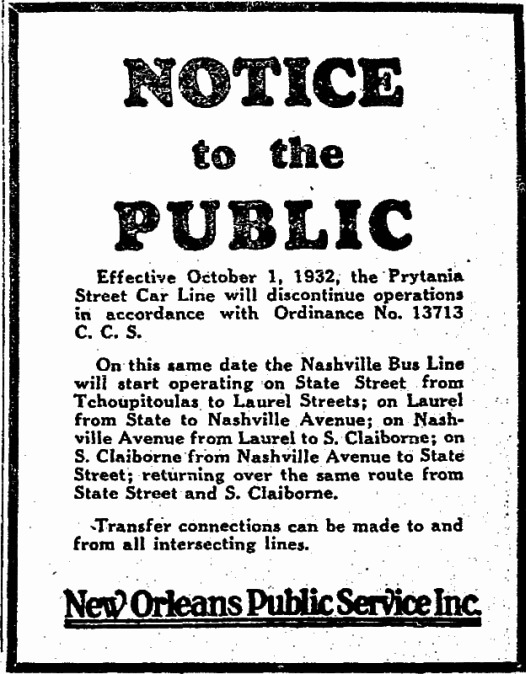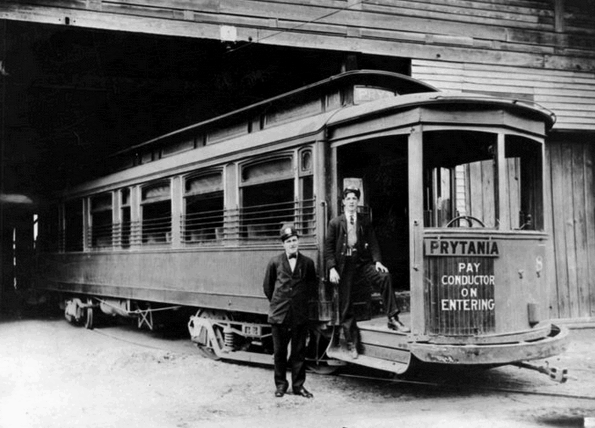|
Today in New Orleans History |
|
|
June 15


 South Front Street  

To receive an update for each day in New Orleans
history, join our facebook page
- Today in New Orleans History
Tweet
It's the most recognizable tomb in the cemetery, not for its distinct architecture, but for the markings
left there over the years by believers and skeptics alike. This tomb is the reputed burial place of Marie Laveau, the most
powerful voodooienne to live in New Orleans. Marie Laveau was born in 1792. It's not clear if she was born in Saint-Domingue
(Haiti) or in New Orleans. The woman in the Glapion tomb died in 1897. It's not out of the question that the same woman born
in the late 18th century died in the late 19th century, but it is possible that the woman in the tomb is the original Marie's
daughter. It is known that the original Marie took up with a man named Glapion after her first husband died in 1826. Whether
M. Glapion had his daughter or his wife buried with him is still a mystery. ource: http://www.yatcom.com/neworl/naborhud/treme/stlouisone/marielaveau.html
According to official New Orleans vital records, a certain Marie Glapion Lavau died on June 15, 1881, aged
98.
Tulane Stadium --- Gone On November 2, 1979, Tulane President Sheldon Hackney announced
that Tulane Stadium would be demolished. The demolition started on November 18, 1979. In the spring
of 1979, Tulane Curator of Art Bill Cullison found two 3000 year-old Egyptian mummies in their wooden sarcophagi under the
bleachers. Cullison had been looking for them. To his knowledge, they had been given to the school
(then named University of Louisiana) in 1852 by Egyptologist Doctor Joseph Gliddon who had ceremoniously unveiled them to
an audience at the Mechanics Institute near Common and Dryades streets. He had found a 1938 City Guide which described
them as a "young man and a young woman". Cullison said that they had been on display in Tulane's old Natural
History Museum in Gibson Hall unitl it was dismantled in 1959 and replaced with classrooms. Cullison knew that they were
stored in a vault in the stadium but did not know their exact location. He found a metal structure under the bleachers
and suspected it might contain the mummies. He had more trouble trying to find the key to open it than he did actually locating
the vault. When he stepped inside, he found glass cases through which he first saw the hair and fingernails of the
deceased couple. The cases were put on display in the Special Collections Division of the Howard Tilton Library.
"Tulane's Tuts", an apt description by Dixie Roto writer Elise Martinez in a March 18, 1979 article about them,
were moved to the medical school and put under cold storage. On the day of the unwrapping, Gliddon advertised
his mummies as "Adam and Eve" but at the actual ceremony he claimed not to know their gender, race, or age. The
unwrapping was done under the supervision of New Orleans faculty members of the Medical Department of the University of Louisiana.
The actual unrolling was principally done by doctors Jones, Wedderburn, and Chilto who took 45 minutes to accomplish their
task. The mummy turned out to be female "in a beautiful state of preservation". Gliddon then announced
that at his next lecture he would divulge secrets learned after studying the swathing and inscriptions found on a piece of
papyrus found within the folds of the linen. At his last New Orleans lecture, on March 3, 1852, faculty members of the
university read letters revealing the results of their examinations of the remains and Gliddon announced that he would turn
two mummies over to the school's Museum of Medicine which, in 1880 was located on Common Street between Baronne and Dryades
streets. A later account of Gliddon's mummies tell us that he actually gave them to Josiah Nott, a
University of Louisiana anatomical professor. They remained in the medical school's anatomical library until 1894 when
they were moved (with the school) to the uptown campus and placed in the Museum of Natural History on the third floor of Gibson
Hall. In 1927 there were at the Mid American Research Institute in Didwiddie Hall. They moved back to Gibson hall
in 1930 and from 1955 to 1978 they were placed in a dark, non-climate controlled room under the stadium's bleachers.
In 1982 they moved to the basement of the Howard-Tilton library and more recenlty back to Diwiddie Hall in a special darkened
room where they were studied by anthropologist John Verano. Ground was broken for Tulane stadium on April 7, 1924.
It opened on October 23, 1926 with a seating capacity of roughly 35,000. New Orleans-Item sports
editor Fred Digby popularized the term "Sugar Bowl" in 1927. The first Sugar Bowl game was played there on January
1, 1935, against the Philadelphia Temple Owls. The last was on December 31, 1974 when Nebraska
beat Florida 14-10. In 1947 the stadium was expanded to accommodate 80,985 fans. Lights were installed in 1957. It
was the home of the Saints, from their first game on September 17, 1967 when John Gilliam returned
the opening kickoff 94 yards for a touchdown (but they lost 27-13 loss to the Los Angeles Rams) until December 8,
1974 when they won 14-0 over the St. Louis Cardinals. On November 8, 1970, Tom Dempsey made his record-breaking
63-yard field goal there, pushing the Saints into a 19-17 win over the Detroit Lions. The record attendance of
86,598 was set on December 1, 1973, during the last game played by LSU against Tulane in the Sugar Bowl.
Tulane defeated LSU 14-0, ending a 25-year winless streak against LSU. The last game ever played in Tulane
Stadium was between De La Salleand Rummel on November 1, 1979. The last point scored in Tulane Stadium History
was by Rummel High place kicker Gary Boudreaux. The stadium was under demolition from November 18, 1979 through
June 15, 1980. (Photo by Infrogmation, 1980)
The New Orleans City Railroad Company was chartered on June 15, 1860. By 1861, twenty-six miles of horse railroad track
had been laid. Service began on the Camp and Prytania Line on June 8, 1861. Streets of the original route included Canal,
Camp, Prytania, Toledano, Poeyfarre, and Magazine. The Prytania Streetcar began operation on as a mule-drawn car line.
It was called the "Silk Stocking" line because its route included the streets of the tony Garden District.
Various route changes and consolidations took place over the years. Railway companys experimented with several potential
substitutes for horsecars. The ammonia motor was tried on several lines, including the Prytania, but was considered to
be impractical. By the 1890s all lines were electrified -- the Prytania Streetcar Line on September 15, 1894. Uptown residents
could easily ride to Canal Street in the speedy and comfortable streetcars until October 1, 1932 when the line was discontinued.
The Prytania Streetcar Line was serviced almost exclusively by the "Prytanias,"
a luxurious class of electric cars just as distinctive as the elegant "Garden District" neighborhood. Fifty cars
were ordered on April 21, 1910 from the St. Louisi Car Company. The exteriors were painted yellow and orange and their
numbers ran from 355 to 404. Mahogany interiors surrounded patrons seated in St. Louis rattan seats. They looked out
of Robertson windows that slid conveniently into side panels when open. The "Prytania" cars were designed for
double-end operation and the prepayment of fares, the first of its type in New Orleans. The 800 model cars replaced the Prytanias on September 16, 1923. The Prytanias were then shifted to lighter
traffic routes. A public's changing preference for private transportation made streetcar operation unprofitable.
According to a New Orleans Public Service Inc. newspaper announcement, the Prytania Streetcar Line discontinued operations
on October 1, 1932 and the Nashville Bus Line began service over a part of the territory formerly served by the line. Prytania
Street, itself, was not included. Remaining Prytanias were scrapped that same year. The
Prytania streetcar barn was located on Prytania Street between Robert, Pitt, and Upperline. After the city acquired
the property, a 1936 ordinance dedicated it for "public purposes". The location is now a shopping center,
fronting Prytania, with a CVC pharmacy (4901 Prytania) as its anchor. Main Source: http://neworleanshistorical.org/items/show/540#.Ukfi9X9dy8A
|
|
|

To receive an update for each day in New Orleans history,
join our facebook page - Today in New
Orleans History.
Analytics |
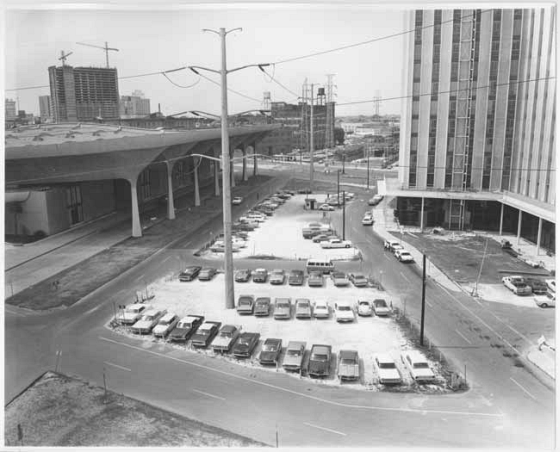
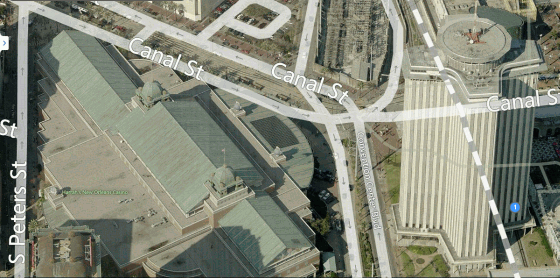
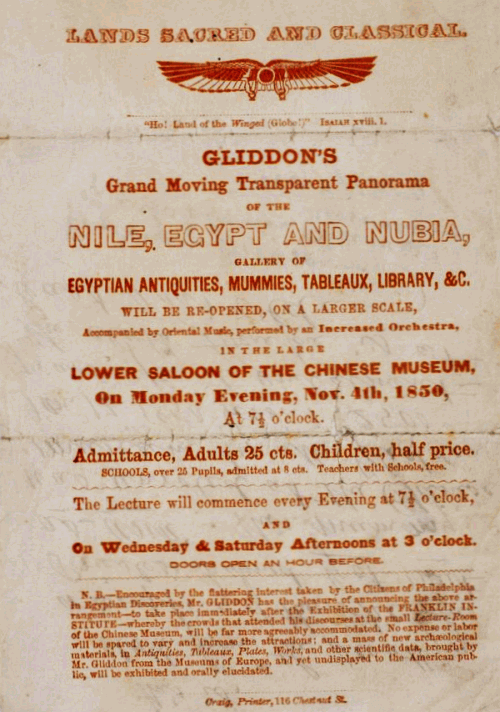 A search of old newspaper articles reveals that Gliddon was a bit of showman who, during the 1850s, took his mummies around
the country to display them to the general public. In Boston in January 1850 he had an "officiating carpenter"
saw a sycamore box in half, lenghwise, to reveal a female mummy to a large audience. In September 1850 he was a subject
a a media blitz when he mistook his male mummy for a female. In 1851 he was in Philadelphia, hawking and displaying
the ancient Egyptians. In January 1852, claiming to be a former U.S. Consul to Cairo, he advertised a series of 12 lectures,
beginning on March 2, 1852, to be held in New Orleans at Lyceum Hall sponsored by the Committees of
the Board of School Directors at which he would discuss and display his mummies and, on February 27, he would
unwrap one of them before the audience. Tickets for one gentleman accompanied by two ladies could be had for $8.00,
which allowed admittance to all 12 lectures (a season ticket, of sorts). For $5.00 one person could attend all lectures.
The unwrapping required an additional 50 cents from season ticket holders or $1.00 from the general public. The handbill
on the right advertises Gliddon's Philadelphia show.
A search of old newspaper articles reveals that Gliddon was a bit of showman who, during the 1850s, took his mummies around
the country to display them to the general public. In Boston in January 1850 he had an "officiating carpenter"
saw a sycamore box in half, lenghwise, to reveal a female mummy to a large audience. In September 1850 he was a subject
a a media blitz when he mistook his male mummy for a female. In 1851 he was in Philadelphia, hawking and displaying
the ancient Egyptians. In January 1852, claiming to be a former U.S. Consul to Cairo, he advertised a series of 12 lectures,
beginning on March 2, 1852, to be held in New Orleans at Lyceum Hall sponsored by the Committees of
the Board of School Directors at which he would discuss and display his mummies and, on February 27, he would
unwrap one of them before the audience. Tickets for one gentleman accompanied by two ladies could be had for $8.00,
which allowed admittance to all 12 lectures (a season ticket, of sorts). For $5.00 one person could attend all lectures.
The unwrapping required an additional 50 cents from season ticket holders or $1.00 from the general public. The handbill
on the right advertises Gliddon's Philadelphia show. 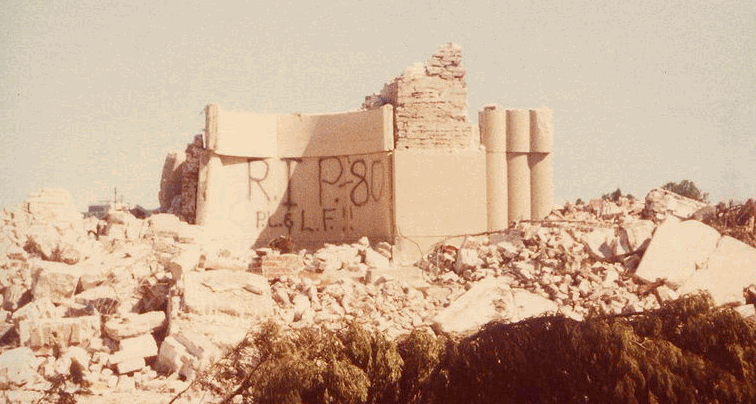 Tulane Stadium was the site of three of the first nine Super Bowls -- Super Bowls IV in 1970, VI in 1972, and IX in 1975.
Super Bowl IX was the final professional league game ever played at the stadium. It would become one of three stadiums which
hosted a Super Bowl and are no longer standing. Tampa Stadium (which hosted two Super Bowls) was demolished in April 1999
and the Orange Bowl (which hosted five Super Bowl games) was demolished in September 2008.
Tulane Stadium was the site of three of the first nine Super Bowls -- Super Bowls IV in 1970, VI in 1972, and IX in 1975.
Super Bowl IX was the final professional league game ever played at the stadium. It would become one of three stadiums which
hosted a Super Bowl and are no longer standing. Tampa Stadium (which hosted two Super Bowls) was demolished in April 1999
and the Orange Bowl (which hosted five Super Bowl games) was demolished in September 2008. 